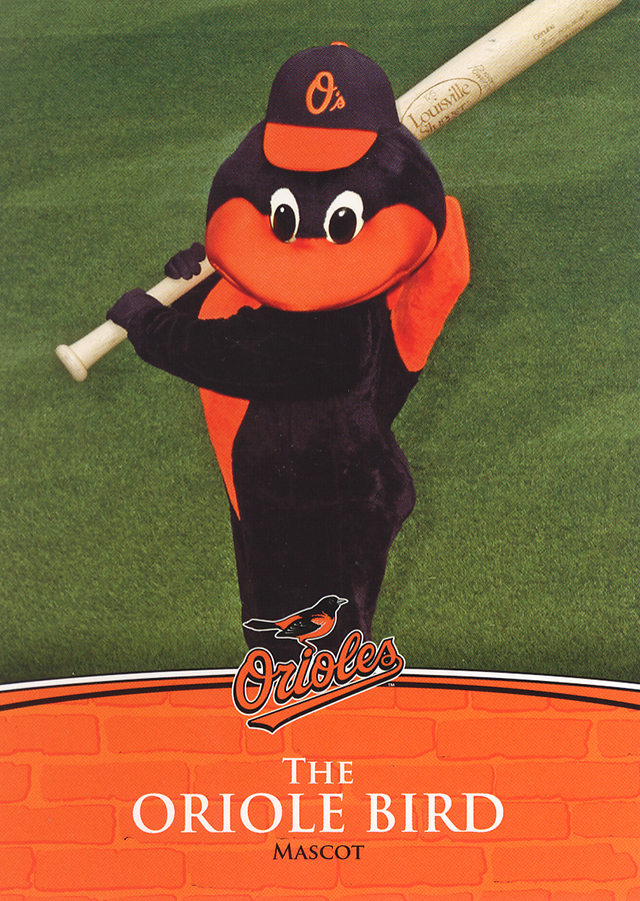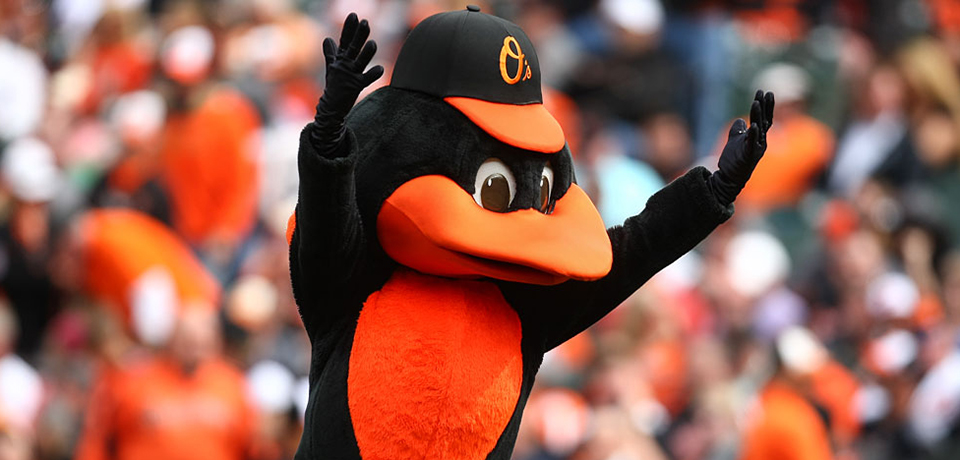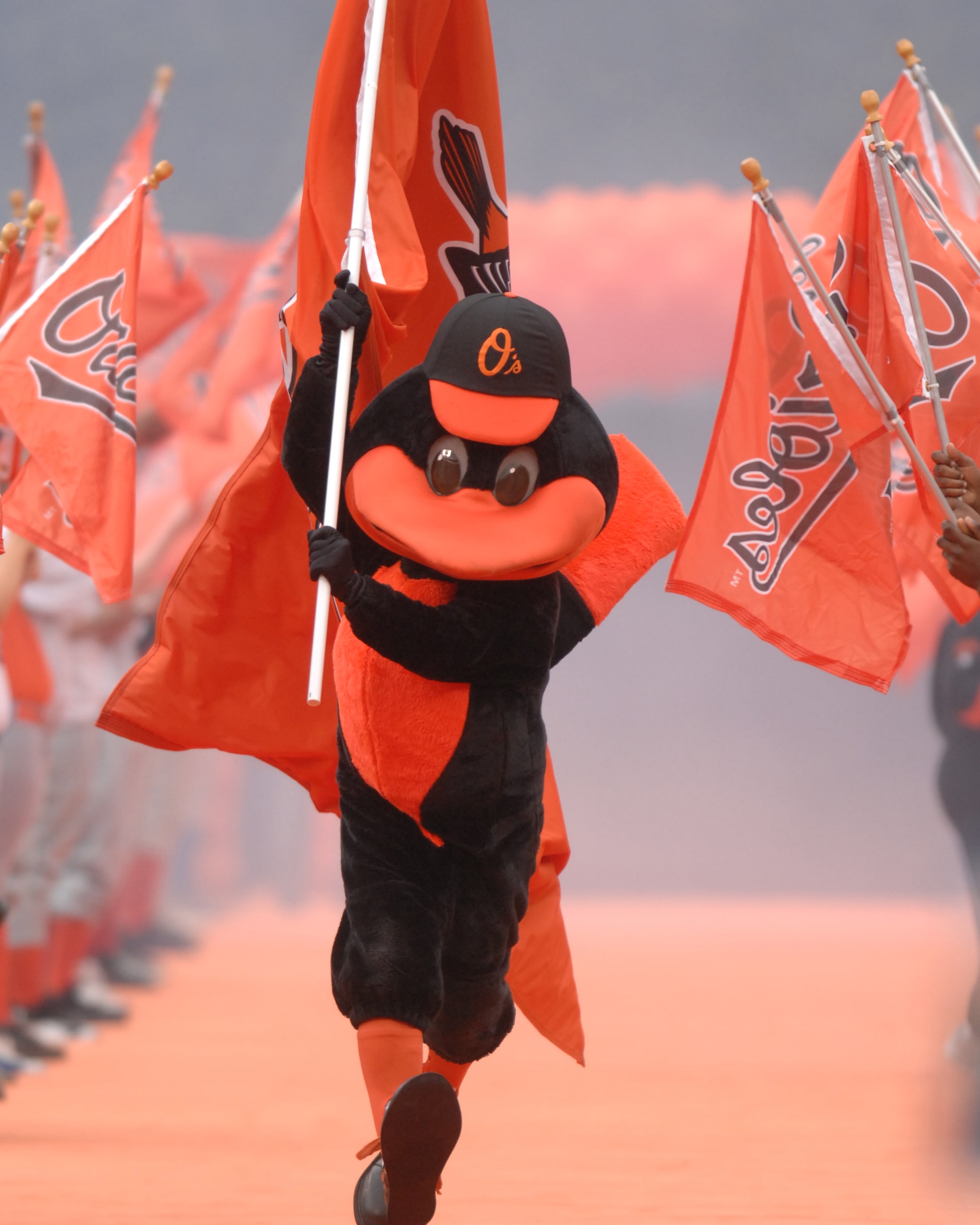What Is The Bird On The Orioles Team? Uncovering The Iconic Baltimore Oriole
Have you ever stopped to ponder the feathered friend gracing the caps and jerseys of Baltimore's beloved baseball team? It's a question many folks, whether they're sports fans or just curious about local symbols, sometimes ask. What kind of bird is that, anyway? As a matter of fact, the team's name points directly to a real, vibrant creature, a bird that truly stands out in nature.
For those who follow the Baltimore Orioles, the bird is a familiar sight, yet its true identity and connection to the team might not be something everyone knows a lot about. It's more than just a logo; it's a living symbol with its own unique story and habits, and it has a pretty interesting link to the state of Maryland itself. You see, the team's choice wasn't just random, it was a nod to something very special in the region.
In this article, we're going to peel back the layers and discover everything about the bird on the Orioles team. We'll explore what it looks like, where it lives, and why it holds such a special place in the hearts of Marylanders. So, arguably, let's get to know this colorful little flyer a whole lot better, shall we?
Table of Contents
- The Iconic Bird: Unveiling the Baltimore Oriole
- More Than Just a Mascot: The Bird's Connection to Maryland
- Life as a Baltimore Oriole: Fascinating Facts
- Protecting Our Feathered Friends: Conservation Efforts
- Frequently Asked Questions About the Baltimore Oriole
The Iconic Bird: Unveiling the Baltimore Oriole
The bird that lends its name to the Baltimore Orioles baseball team is, pretty simply, the Baltimore Oriole. This isn't just any bird, though; it's a truly striking songbird known for its bright colors and lovely tunes. You know, it's the sort of bird that catches your eye right away if you happen to spot one.
A Splash of Orange and Black: What They Look Like
When you see a male Baltimore Oriole, you'll probably notice its bright, fiery orange feathers, especially on its belly and rump. This vivid orange contrasts sharply with its black head, back, and wings. It also has white wing bars that stand out against the darker feathers. Females, on the other hand, are a bit more subdued; they usually have a yellowish-orange color instead of the really bright orange, and their black markings are not quite as strong. This color difference helps you tell them apart, which is kind of neat.
These birds are not particularly large, typically measuring about 7 to 8 inches from the tip of their beak to the end of their tail. They have a slender build and a pointed beak, which is well-suited for their eating habits, as we'll talk about later. Their appearance is pretty distinct, so you can often tell it's a Baltimore Oriole just by its colors and general shape, too it's almost a dead giveaway.
Where These Birds Call Home: Habitat and Migration
Baltimore Orioles are birds of the woodlands and open forests, often found along forest edges, in parks, and even in suburban areas with plenty of trees. They tend to prefer deciduous trees, which are the ones that lose their leaves in the fall, like oaks, maples, and elms. You'll often find them up high in the tree canopy, where they spend a good bit of their time foraging for food, and that, you know, keeps them pretty busy.
These birds are also known for their long journeys. They are migratory, meaning they don't stay in one place all year round. During the spring and summer, they breed in eastern North America, stretching from southern Canada all the way down to the southeastern United States. When the cooler weather arrives in the fall, they pack up, so to speak, and head south for the winter. Their winter homes are typically in Central and South America, particularly in parts of Mexico, Colombia, and Venezuela. This yearly trip is quite a feat for such a relatively small bird, honestly.
Their migration patterns are pretty regular, with birds returning to the same breeding grounds year after year, if they can. It's a testament to their incredible navigational skills and their ability to survive long flights over vast distances. So, when you see them in your area, you know they've probably just completed a really impressive trip, which is kind of amazing.
Their Daily Grub: What Baltimore Orioles Eat
Baltimore Orioles have a varied diet, but they especially love insects and fruits. During the breeding season, insects make up a large portion of their meals, providing them with the protein they need for raising their young. Caterpillars, beetles, grasshoppers, and even some spiders are on their menu. They're pretty good at finding these critters among the leaves and branches of trees, and they'll often pick them right off the foliage.
As the summer progresses and into the fall, fruits become a much more important part of their diet. They're particularly fond of dark-colored fruits like cherries, mulberries, and grapes. They also enjoy nectar, and you might even see them at hummingbird feeders, sipping on the sweet liquid. This sweet tooth is something that makes them a favorite among backyard bird watchers who put out oranges or grape jelly, which they seem to really enjoy, too. Basically, they're not too picky when it comes to a good meal, as long as it's nutritious.
More Than Just a Mascot: The Bird's Connection to Maryland
The Baltimore Oriole is much more than just the namesake of a baseball team; it holds a deep historical and symbolic connection to the state of Maryland. This link goes back centuries, making the bird a true emblem of the region. You know, it's pretty special how a bird can become so tied to a place.
Why "Orioles"? A Nod to History
The name "Orioles" for the baseball team isn't just a catchy title; it's a direct reference to the state bird of Maryland, the Baltimore Oriole. But the connection goes even further back in time. The bird itself was named after Lord Baltimore, the founder of the Maryland colony, way back in the 17th century. His family's coat of arms featured colors that were strikingly similar to the bird's bright orange and black plumage. So, the bird's colors mirrored the colors of the ruling family, which is pretty interesting, right?
When professional baseball came to Baltimore, it seemed only natural to name the team after this iconic bird, which already had such a strong historical tie to the state and its origins. The team has carried the name "Orioles" for many, many years, linking its identity firmly to this beautiful creature and the state's heritage. It's a tradition that, frankly, has stood the test of time.
The State Bird: A Symbol of Maryland
In 1947, the Baltimore Oriole was officially designated as the state bird of Maryland. This formal recognition solidified its place as an important symbol for the state. It represents the natural beauty and vibrant spirit of Maryland, and its presence is a source of pride for many residents. You see, it's not just about a baseball team; it's about a piece of nature that truly embodies the local spirit.
The bird's bright colors, which are also the official state colors of Maryland, make it an instantly recognizable emblem. It appears on various state symbols and is a common sight in Maryland's natural landscapes during the warmer months. So, when you think of Maryland, the Baltimore Oriole is one of the first things that should come to mind, and that's pretty cool, if you ask me.
Life as a Baltimore Oriole: Fascinating Facts
Beyond their striking looks and their connection to a baseball team, Baltimore Orioles have some really neat behaviors and characteristics that make them fascinating creatures to observe. They're quite clever in how they build their homes, and they have some unique dietary preferences, too. It's almost like they have their own little quirks, if you know what I mean.
Building a Home: Their Unique Nests
One of the most remarkable things about Baltimore Orioles is the way they build their nests. They are truly master weavers. Unlike many birds that build cup-shaped nests, Orioles create a hanging, pouch-like structure that dangles from the tips of tree branches. They use plant fibers, grasses, bits of string, and even animal hair to weave these intricate nests. The nest is deep and strong, designed to protect their eggs and young from predators and bad weather. It's a pretty amazing feat of engineering for a bird, honestly.
The female does most of the building, working tirelessly for several days to create this suspended nursery. The male might bring her some materials, but she's the chief architect. These nests are often found high up in tall, leafy trees, making them hard to spot from the ground. This clever placement helps keep their precious cargo safe, and that's something they're pretty good at, as a matter of fact.
A Sweet Tooth: Their Love for Nectar
While insects are vital for protein, Baltimore Orioles have a well-known fondness for sweets. They love nectar from flowers and fruit juices. This is why you often see them at backyard feeders that offer oranges or grape jelly. People who want to attract these beautiful birds to their yards often put out these specific treats, and the Orioles seem to really appreciate it. They'll often peck at an orange half, getting to the juicy pulp inside, which is kind of fun to watch.
This sweet preference also makes them important pollinators for some plants, as they move from flower to flower, just like hummingbirds. It's a pretty interesting role they play in the ecosystem, and it shows how diverse their diet can be. So, if you're looking to attract them, a bit of something sweet might just do the trick, you know?
Protecting Our Feathered Friends: Conservation Efforts
Even though Baltimore Orioles are still relatively common, like many bird species, they face challenges in the modern world. Things like habitat loss, pesticide use, and climate change can affect their populations. Protecting these beautiful birds means looking after the places they live and breed, and making sure they have enough food. It's something that, quite honestly, takes a bit of effort from everyone.
Many organizations and individuals work to help protect Baltimore Orioles. This includes preserving forests and natural areas, reducing the use of harmful chemicals, and even planting native trees and shrubs that provide food and nesting sites. People can also help by putting out appropriate feeders

The Oriole Bird - Baltimore Orioles - SportMascots.com

The Oriole Bird - Baltimore Orioles - SportMascots.com

The Oriole Bird | Baltimore Orioles